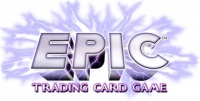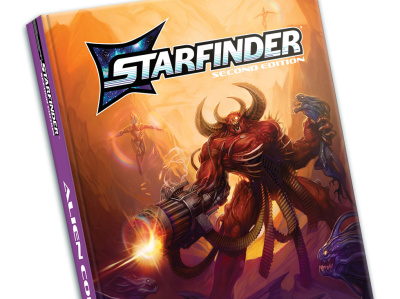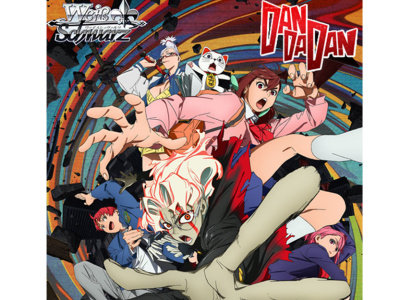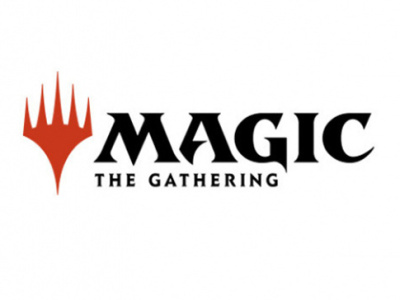
The Epic TCG was released this spring, and quickly began selling surprisingly well in some stores (see “Epic TCG Bursts into Stores”). We talked to Epic company owner Rob Dougherty at the GAMA Trade Show about the company’s next release, how the game play differs from other TCGs, and what retailers are doing to be successful with the game.
Tell us about the next Epic TCG release.
We have a second set for Epic coming out in August of 2009. It’s going to be approximately a 150-card set, and it will be designed to be played either on its own or combined with the core set for sealed draft play or design deck.
So that will be around the time of Gen Con?
It will be a Gen Con time frame release.
And is that release just boosters?
It’s a booster only release. One of the unique things about Epic is it plays incredibly well out of a very small amount of product. If you take two 15-card packs of Epic, open them up, and shuffle them together, you’ve got a 30-card sealed deck for Epic and it plays very, very well. There are no resource cards in Epic, cards are played using actions. Every card out of the pack is playable and we thoroughly tested this deck for sealed play to make sure that every card was a good, useful tool for someone to use. In most games there are a lot of cards that are just terrible, that players would never want to use, and so when they’re building a deck they need to get a lot of extra cards so they can take all the bad ones and get rid of them and play with just the good ones. In Epic, every single card is good and useful.
Our commons are uncommonly good. My design philosophy is to make every card useful and to not make certain cards more powerful than others, but to make cards useful in different situations.
It’s like which is more powerful, a sledgehammer or a gun? That depends whether you’re trying to break rocks of kill people. That sort of philosophy has been applied to the cards so that the cards are situationally better or worse than others, so that depending on what you’re trying to get your deck to do or what situation you find yourself in, certain cards will be better applied to that situation.
What’s the rarity scheme?
In the core set, there are rares and commons. There are 200 commons in the core set and 100 rares. A pack comes with 14 commons and one rare. Every pack will have seven of the fast commons that you can play at any time, and seven of the slower commons that you can only play on your turn, and one rare card. That mix of fast and slow cards will give every player a good play experience in a sealed pack.
The slower cards are harder to play because you can only play them on your turn, but they’re more powerful. The faster cards are useful because you can play them on your opponent’s turn, but they’re a little bit weaker. So every deck wants a mix of both and the packs come with that mix.
Who designed the game?
I designed the game. I’m a Hall of Fame Magic player. I also did design work on the Versus card game from Upper Deck and I’m the designer of Battleground Fantasy Warfare tabletop war game.
My lead developer is Darwin Kastle. He’s also a Hall of Fame Magic player. He did development work on Versus, he did work on Battleground. He’s also the designer of
a non-collectible card game.
What’s the high-concept description of the game?
Easy to play cards, powerful effects, and strategic play.
What’s the genre?
It’s a mixed genre. The idea behind the game is sort of Clash of Titans-esque.
Players are gods of old, and they summon champions to fight for them. They can reach through time and space and pull champions from anywhere they want. The base world is fantasy medieval, but with some effort they can pull in things from the future and things from the past. So there are dinosaurs and machine guns and wizards.
In the first set there was some stuff from the past and a little tiny bit of future tech and mostly fantasy medieval. In the second set, it’s got a temporal theme. It’s a little bit easier for the gods to pull from the future and the past in the second set, so there’s going to be giant mechs and dinosaurs and dragons all fighting together. Really, really fun stuff.
What’s your evaluation of the response to the inital release.
The response has been phenomenal. We had the demo decks online and certain stores downloaded the demo decks and did a lot of demo-ing in their stores before the game came out, and those stores have just done phenomenal sales.
All in Games in
Kings Games in
Now some stores got Epic in, put it on the shelf, and haven’t done any demo-ing with it, and they haven’t sold any.
So at this show, I’ve had retailers that carry Epic saying one of two things. Either it’s, “Oh my God, I’m selling so much of this game it’s crazy,” or "I got in one display and I haven’t sold a pack yet, what am I doing wrong?"
The answer is demos. Take a couple of packs, open them up, put them in someone’s hands, just have them shuffle and play. It’s very addictive, and the fact that they can play such incredible games out of such a small amount of product is what gets people going.
Is it a hobby only product?
It is a hobby only product. It is only available through hobby distribution.
Do you plan to stay that way?
For the immediate future, we’re definitely hobby only. For the far future, who knows, but for this year, it’s certainly a hobby only product.







